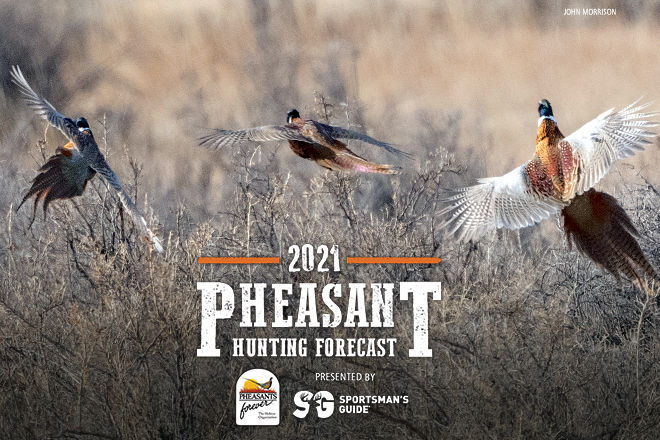
Michigan hunters who find good grassland will find pheasants this season
By Greg Breining
Michigan’s pheasants have met serious challenges asresurgent forests reclaim some grasslands, and as urban development snatches away its share of habitat as well. But good grassland habitat that has produced pheasants in recent years should come through again this year, says Adam Bump, upland game specialist for the Michigan Department of Natural Resources.
“That shift in habitat and land use has been one of the big contributing factors at reducing pheasants across the landscape,” he says. “We don’t see any shifts in that trend,” he says.
But “we have pheasants where there’s good pheasant habitat. And I think that if you can find those places where we have populations, you’d have as good a chance as anywhere else in having a successful hunt,” he says.
For Michigan hunters that means first and foremost agricultural areas in the thumb of the Lower Peninsula, which has reliably produced the best pheasant hunting with the best bird numbers in the state, Bump says.
Other regions to look for birds include the rest of the Lower Peninsula (basically south of U.S. Highway 10) and the so-called Banana Belt of Menominee County in the southern Upper Peninsula.
Bump says a long-running mail carrier brood survey hasn’t returned results yet. Unfortunately, the results have been sporadic and the number of broods reported generally low. “I’m not sure that it’s giving us a lot of useful information anymore,” Bump says.
Bump isn’t aware of any spring or summer weather that would have hurt pheasant survival. For that reason, “I don’t think it’s going to be a particularly bad season,” he says. “So if you’re used to hunting pheasants in Michigan and you know where to go, I think you’re going to have a good shot at seeing some birds.”
Best Bets
For hunters who don’t have access to private land to hunt wild birds, Bump suggests Hunter Access Program land — private acres leased to provide hunting access. “One of the priorities of the HAP program is to try to provide ground for pheasant hunting opportunities,” he says.
He also recommends state game areas in the southern Lower Peninsula, many of which have grassland habitat and pheasants.
To get started, scout out HAP lands and game areas on the Michigan DNR website. In particular, check out the Mi-HUNT interactive map to find public land and public access, to see satellite imagery, and get descriptions of public land and habitat and the game species they support.
The Michigan DNR has been meeting with an array of other agencies and nongovernment organizations (including Pheasants Forever) to encourage private grassland management in areas surrounding big state game areas in pheasant range. This Michigan Pheasant Restoration Initiative “has been pretty successful at focusing some attention on grassland management and getting people out trying to improve habitat where we have it and maintain it in those bigger landscapes. The initiative has had success and impact here on pheasant habitat in Michigan,” says Bump.
If You Go
The pheasant season runs October 10–31 in Zone 1 (part of the Upper Peninsula). It run October 20 – November 14 in Zones 2 and 3 (the Lower Peninsula). There’s a late season December 1 – January 1 2022 in part of Zone 3 (the core of Michigan pheasant range). Check regulations for exact boundaries.
The limit is 2 roosters a day and 4 in possession.
Notable
New this year in Michigan is a $25 pheasant license required for all pheasant hunters 18 years of age and older planning to hunt pheasants on any public land in the Lower Peninsula or on lands enrolled in the Hunting Access Program. Money raised will support the public land pheasant stocking program.